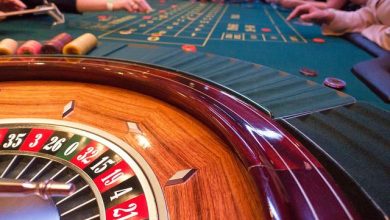Gambler’s Milieu
Depending on the individual approach to gambling, there are different kinds of gamblers, namely: social, frequent, problem, and compulsive gamblers. Regardless of the type of gambler, casinos have created a niche for every gambler to exorcize their demons and feed the need for excitement in their lives. Be it online casinos or land-based ones, design is an integral part of the gambling business. Online casinos like https://www.stakers.com/de/casino/ offer players bonuses and conditions that can benefit professional gamblers but the graphics and design of the site play a huge part in luring and keeping players active on the site.
Land-based casinos are known for having a wild design. This is done with the needs of the customers in mind. Most professional gamblers have a unique playing style or approach to gambling. Many of them prefer to do their gambling when casinos are busy, which is often at night. Social and frequent gamblers are players who are driven by both the ambience of the casino and winning. The frenzy at the casino floor created by the influx of fellow gamblers, the music , the bright lights, and the beautiful women cheering on the big winners are the things that make each trip to the casino seem like an adventure. The problem and compulsive gamblers just have the need to scratch the itch to gamble, mostly at a personal cost.
Bill Friedman, a renowned casino designer, and manager, pioneered the classic gaming design. His vision and ideas altered the trajectory of Las Vegas Casinos such as the Castaways Hotel & Casino or the Silver Slipper Casino. They went from being loss-making businesses to lucrative ones. His design philosophy was to make the casino more enjoyable and stimulating for players.
His design principles included bright colors such as orange or red, dark interiors, low ceilings, mystifying maze-like floors with several mirrors, and the removal of all clocks. All of this is done to lure gamblers and to get them playing right away when they walk into the casino. This was a classic gaming design that walled off distractions from the outside world, which made the players remain focused on spending more time and money with the goal to play to win while ignoring the odds. In the mid-1980s, this old approach became a theme in the history of gambling and a new design was applied.
Modern casino design today is quite different from the dark, depressing visions of the old. Friedman’s unique concept was revolutionary and it served its purpose but the no clocks in the walls is the only idea that didn’t succumb to the test of time. If you aren’t carrying your smartphone or handbag with you, you won’t be able to tell when it is day or night. This is not by chance. Casino designers learn from owners, who predicted that players won’t stop gambling if it isn’t dark at night.
No matter how each day on the floor turns out, the two main goals for any casino interior design project are to make gamblers not gamble responsibly and provide a well organized backend for employees engaging the gamblers.














